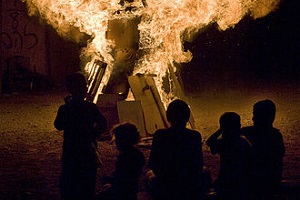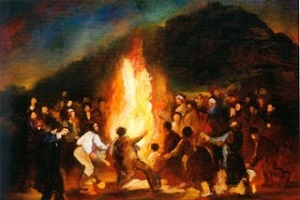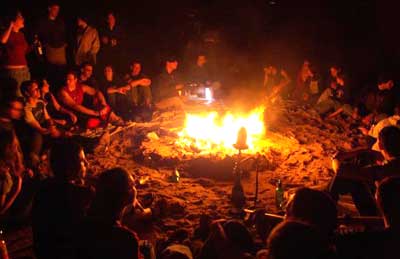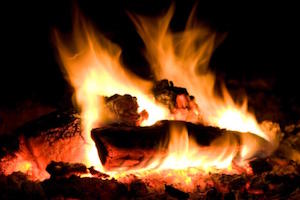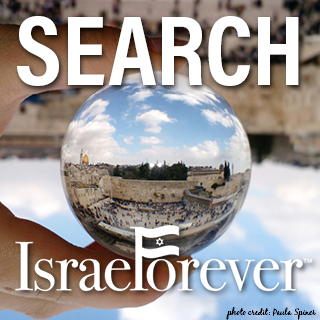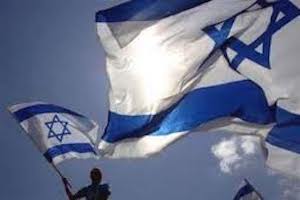A Jewish Revolt, the Romans and Modern Israel
Apr 30, 2013
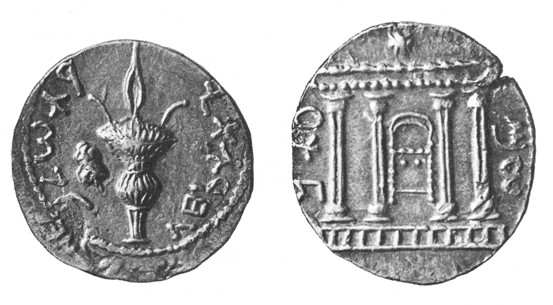
Thousands of coins were issued by Bar Kochba's government celebrating the "Redemption of Israel."
Among the historical events associated with "Lag Ba'omer" is the Second Jewish Revolt led by Bar Kochba which was a war of national liberation against the Roman Empire. It mostly took place in Judea, during the years 132 through 135, some eighty years after the destruction of the Temple.
At the early stages of the revolt, Bar Kochba's forces actually defeated whole Roman armies. A Roman legion that was dispatched from Egypt to help was completely annihilated by Jewish forces. Bar Kochba fought to liberate Jerusalem and apparently extended his rule beyond Judea to much of what is today the territory of Israel. Thousands of coins were issued by his government celebrating the "Redemption of Israel."

In the modern period, two schools of thought emerged with respect to his revolt. Israel's first prime minister, David Ben-Gurion, and most of his generation, saw in Bar Kochba a heroic leader who could be a source of inspiration for the youth of Israel who were being asked in 1948 to fight for the reestablishment of their homeland. On the other side of the political spectrum, the Revisionists led by Zeev Jabotinsky named their youth movement after Beitar, where Bar Kochba’s forces were finally defeated by Rome.
Bar Kochba continued to be an important symbol for Israel in the years after its independence. As defense minister, Ben-Gurion authorized the IDF to assist Prof. Yigal Yadin, the second IDF chief of staff, and his archaeological teams to uncover artifacts from the Bar Kochba Revolt that were hidden in caves in the Judean Desert. These included Bar Kochba’s written communications with his forces and also religious items like tefillin used in daily prayer. In 1982, Prime Minister Menachem Begin gave a eulogy at the grave where the ancient bones of the last 25 survivors of the Bar Kochba Revolt were buried with full military honors.
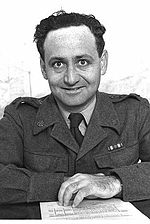
The second view of Bar Kochba was represented by Yehoshafat Harkabi, a former head of military intelligence. In the late 1970s he accused Bar Kochba and his supporters of bringing national disaster upon the Jewish people by conducting a war against all odds to defeat the Roman Empire and by relying upon an "unrealistic assessment of the historical and political circumstances" they faced.
There is no dispute that Jewish losses after three years of fighting were staggering. According to the Roman account by the historian Dio Cassius, written in the third century, 985 Jewish settlements were destroyed by the end of the war and 580,000 Jews were killed. After the revolt, Emperor Hadrian (117-138) forbade Jews from even entering Jerusalem. The leading sage, Rabbi Akiva, who hailed Bar Kochba as the Messiah, and other members of the Sanhedrin were tortured and executed by the Romans at the end of the revolt.
Keep up with every new Israel Forever story on Facebook and Twitter and encourage your friends and family to join in the conversation!
The fires of Lag B’Omer are the spirit of Jewish rebellion and the Jewish spirituality
Learn more today!
Read the full article here.

